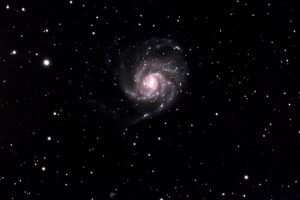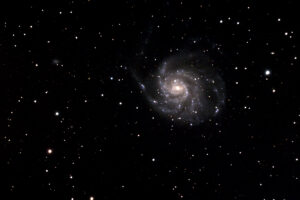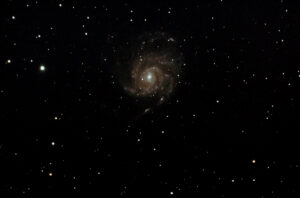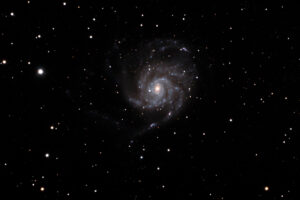



Looking very closely at the details, I think the second and fourth pictures are very similar. I think the fourth picture would have won hands down if I had taken the subs early through much less atmosphere.
I am amazed at how well the nearly full moon picture came out. Visually, I cannot even see M101 through my 10 inch Meade when the moon is out, much less find it in a 5 inch Mak.
I want to see if I can choose about 150 gain instead of using the defaults at 0, 90, and 240. That would let me take 240 to 300 second pictures instead of 360 second pictures which would increase the amount of light and might reduce the number of shots with satellites in them.
I figured out how to use groups in DeepSkyStacker to combine subs from different nights and have each night corrected with its own set of flats.
I think I’m done with this study because there are other targets I want to capture. Here’s looking forward to another night under the stars (hopefully Monday).
